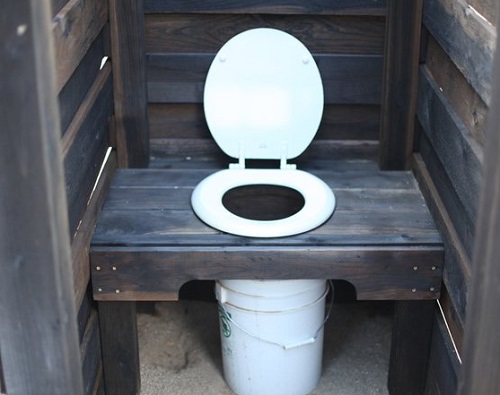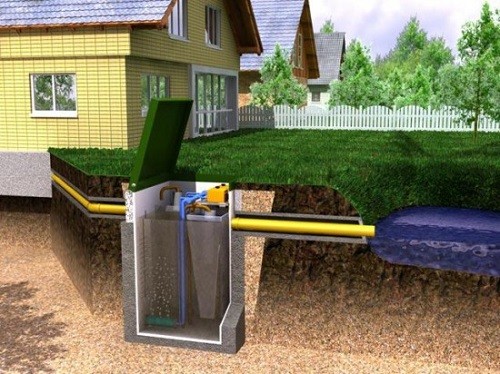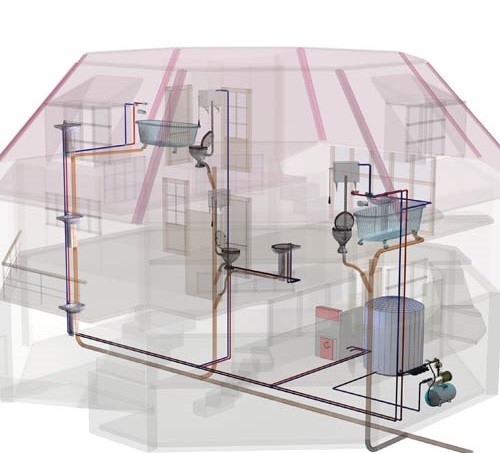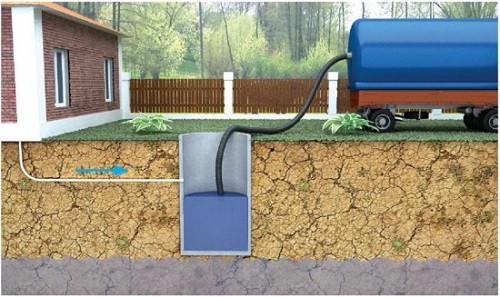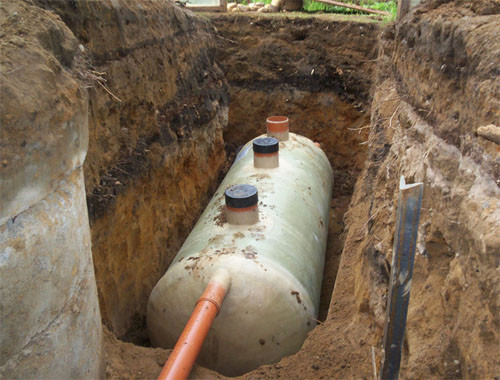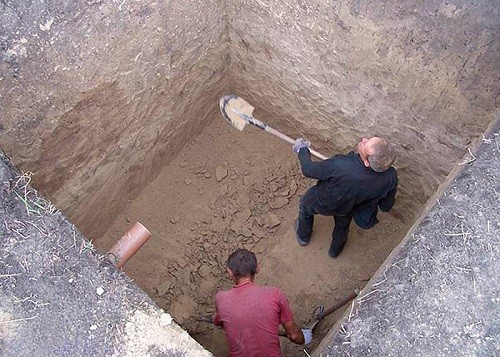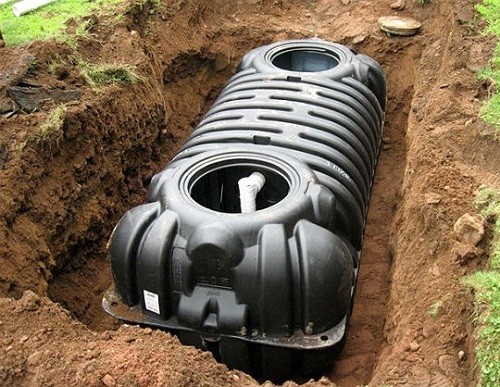Good sewage in the country or in a private house is a pledge of a comfortable stay, so it is extremely important to approach the construction of communications very carefully. Those who have not previously encountered such a task, it is rather difficult to understand the principle of sewage operation in the country. Especially for such a case, we have prepared an article with detailed instructions and useful recommendations.
Content
Total and separate sewage
To begin with, it should be sorted out with the types of sewage for a private house and choose the most suitable. So, sewers are common and separate, and the difference between them lies in the way the output of impurities and water from the house. Depending on this, the volume and type of container in which the drains will flow.
If you approach the question from the rational side, it will be obvious that separate containers are more beneficial for the owners, since water from the bathroom, washing machine, kitchen, etc. You can dwell into the ground through a cesspool without the bottom. Such water is completely harmless to soil - plants, insects and bacteria will quickly recycle the remnants of organic detergents, shampoos, etc.
With the fecal runoff, in a similar way, you will not do - if you send them to a hole without the bottom, then the site will stand the characteristic "ambr", the soil ecology will be broken, and the most unpleasant - fecal masses will fall into groundwater and return as drinking water through the well or column. To get rid of fecal masses, the host will have to construct a completely hermetic cesspool or organize a septic. In both cases, it will be very unprofitable if water and feces will be stamped into this pit, since it will be too fast to fill, and it will take frequent emptying. You will either spend money on a regular challenge of the assessing agents, or pump out the mass on your own and recycle.
Important moment: if the main source of water on the site is the well, then to make the sewer without the bottom is strictly prohibited.
Channelization scheme
When you were determined with the type of sewerage, you can start creating its detailed scheme. In this article we will consider the most common and uncomfortable option - autonomous sewerage in the country. Very often, the owners cannot be connected to the general collector, so the system has to be mounted from scratch with their own hands.
What factors should be considered when creating a sewage plan:
- location and amount of effluent (shells, toilets, bath, etc.);
- how to connect and laying pipes inside the house (under the trim, outside, under the floor, etc.);
- where pipes will go out;
- where the output highway will run;
- type of collector and place of its location (cesspool, biocompanying station, septicchka);
- what depth is the soil;
- the level of groundwater running.
After drafting the sewage scheme, several more questions should be solved:
- Determine the scope of work.
- Calculate the required number of building materials.
- Solve, work independently or attract assistants.
Once all counts are made, you can take for work.
How to make stocks from the kitchen and bathroom
The simplest sewage option in the country (photo) is the effluent equipment from the bathroom and kitchen. It is usually relevant for those houses where the toilet is located on the street or for biotoids. Since household drains are harmless to the environment, they can simply be laid out into the pit in a pit without a bottom equipped with an improvised filter. You can build such a sewer in two ways, each of which we will consider in detail below.
Streams from the bidon
This method is suitable for those who live at the cottage in the warm season. For such a system equipment, you need to get an old plastic bottle by 40-50 liters with a lid, plastic sewer pipe with a diameter of 50 mm and connecting fasteners for them (seals, knees, etc.).
Progress:
- Choose a place to locate the bidon. It must be inserted into the ground and is no further than 4 m from the pipe outlet of the house from under the foundation of the house.
- Drop the pit with a depth of 1 m and the size freely accommodating the bidon.
- From the pit to the foundation, make a trench with a depth of 40-50 cm.
- At the bottom of the pit, organize a sand-ceraimsitic pillow, pouring materials into several layers.
- The bottom and the beadon walls drill a drill, making a lot of holes with a diameter of at least 1 cm. In this case, the bidon will play the role of the filter or a kind of colander for large garbage. Only water will fall into the soil.
- At the very end, the neck from the side to do a hole with a diameter equal to the diameter of the pipe that will be inserted into it.
- Lower the bidon in the pit.
- Put pipes in the house so that the sewage takes starts under the sink in the bathroom. The upper part of the riser should be approximately 40 cm above the floor level. Thus, you will create a bias of pipes and provide sewage in the country without pumping - the water itself will be drained in the desired direction.
- Attach the riser to the wall behind the washbasin with the help of a building clamp.
- When you bring pipes from the house, drill holes just below the surface of the Earth (about 25 cm). It is necessary so that in the cold season the pipes did not cracked if there is a stagnation of water.
- Make sure that the pipe in the exit place is located higher than where it is connected to the bidon - so the water will never be stated.
- Wrap the part of the pipe that comes from the foundation to the bidone, thermal insulation so that in winter water does not frozen, and the sewage system continued to work properly.
- Test the sewer and check whether there are leaks. Turn the water for a couple of minutes, after which you look at the pipes along the entire length, paying particular attention to the connection places.
- Only after you were convinced of the absence of leaks, you can pack the pipe. First pour 15 cm of river sand, after which fill the remaining space of the earth.
- Bidon pour up to the very edges of rubble, large sand or clay, to ensure good drainage.
- Top to lay 2-3 old tires so that the extreme braking from the ground is half.
- The space between the tires and walls of the pit fill the earth and confuse.
- Tighten the bidon cover, and on the wheel put a plywood shield, a tin sheet or any other improvised lid.
Strokes made of tires
The principle of preparation and laying of pipes is exactly the same as in the case of a plastic bidon, only instead of it in a pit, the depth of which is about 2 m, only the tires are stacked until the top.
The sewer tube is fixed in the second tire from above. The inlet is not sealed. If you can, instead of tires, use concrete rings. Sewerage in the country in this case will serve much longer and it will look much more careful.
Organization of Septic
The separation system in the country consists of a cesspool pit for water and a sealed compartment for unclean. The tightness of the pit is extremely important, since it depends not only by the health of residents of the house, but also the state of the environment. The optimal option will be the use of a large hermetic barrel. These often write off various enterprises, but any other containers can be used, for example, dairy barrels, containers from cars for selling live fish, etc. If it was not possible to get one of these large containers, you can purchase a special reservoir or a ready-made plastic well.
Before using old or written off tanks, it is recommended to treat them outside with liquid waterproofing (bitumen) to improve waterproofing and eliminate the possibility of leakage.
Useful advice: Pick the original reservoir, the volume of which is about 3 cubes, since the machine of the assessing agents will be able to quickly empty it at a time.
How to choose the location of septic
Capacity for harmlessness is better not to put it near a residential building, but to arrange at least 10 meters from housing and 30 m - from the well or well. It is best to install the reservoir at the very edge of the site closer to the road so that the car of the car can easily drive and pump out the mass.
Sewer hatch should be made easily accessible and placing in an open place to open and lower the pump hose at any time.
Digging Kotlovana
Since the barrel for fecal sewage is very large, to dig for her pit manually will be quite difficult and long, so it is better to attract equipment. This is especially true when groundwater is too close to the surface - water will arrive faster than one or two people can dig. The excavator is able to quickly dig up the damned dimensions, so that the barrel can be easily fit, leaving only the inlet on the surface.
The bottom needs to be done with a bias so that solid fragments settled in one place and easily could be delivered. From the pit it is necessary to dig a digwin for laying pipes. The channel must be without bends and go straight to the house, because on the corner connections of the faef pipes will create traffic jams, which will lead to a sewage blockage. If it does not work without bending, it should be more than 45 degrees.
Setting capacity
The reservoir descends into the prepared pit with the help of lifting equipment. If you failed to rent a lifting crane or you want to save, you can ask for helping several acquaintances and omit the barrel on the ropes.
The opening for the pipe is drilled from above before or after placing the barrel in the pit. It should be put in a small angle with a slope to the sewer - so the assessing agents will be easier to get solid fragments from the bottom.
Once again I remind you that if you install no septic tank, but a regular tank or barrel, be sure to mark it on top of a mastic or a means to handle the bottom of the car.
How to lay pipes
Clearness and water falling into pipes must leave gravity. To ensure the appropriate conditions, the recess should be removed so that the pipes are lower than the level of the soil freezing, otherwise their additional insulation will be required.
To compensate for the possible removes of the Earth, on the bottom of the trench, it is necessary to pour a layer of sand with a thickness of 10-15 cm. After placing the pipes, it is necessary to pour out as much sand again and only then the ground is torn.
Important: the sewer main must have a bias toward the septic, however, it should be no more than 4 cm / pm.
Pipes can be made of plastic, cast iron or asbestos cement, and their diameter should be at least 100 mm. Where pipes intersect with pedestrian walkways, they should be provided for their protection against mechanical damage. Pipe connection locations are recommended to enhance with sealants. Solid sealants (concrete) are not suitable for this purpose, since soil movements in the spring will provoke cracks. The optimal option is felt with special silicone impregnation.
We hope this article helped figure out how to make the sewer in the country with their own hands. The work is extremely troublesome and responsible, but the better understand the organization's system, the more comfortable will be your life in a new house. Finally, we suggest watch a video about the sewage arrangement in the country (alternative way):

